|
|
|
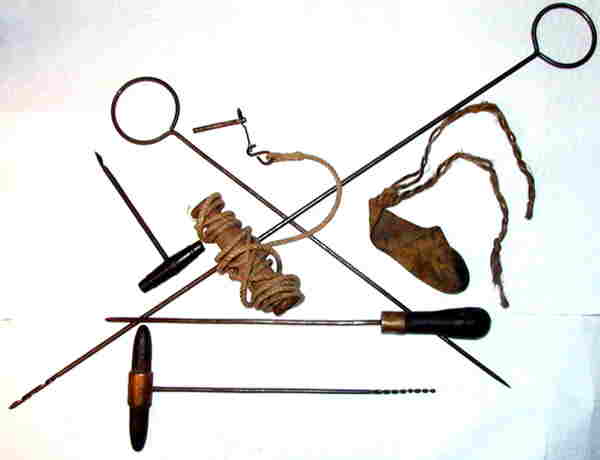
|
|
| The above items are all basic tools of the Civil War artillery man. Pictured are 3 gimlets, 2 priming wires (picks), a lanyard, a thumbstall and a friction primer. The gimlets have nothing to do with vodka. The picks are not associated with shovels and the lanyard isn't worn around the neck....and the thumbstall could have been worn on a finger. A priming wire is pushed down the vent (touch hole) of an artillery piece to prick the powder bag thereby exposing the loose powder to the igniting agent, be it a lighted fuse or a friction primer. Gimlets are used for removing plugs, broken friction primers or other residue from the vent. | |
| The ring gripped wire rod at the top left to bottom right, is a priming wire (pick) . The ring gripped wire rod at the top right to bottom left, is a gunner's gimlet. A wood handled small gimlet is angled upright at the center left. The horizontal wood and brass straight handle wire rod is a another pick. The wood and brass "T' handle implement is another type gimlet. At left center is a gunners lanyard and at right center is a thumbstall. | |
|
|
|
| The large ring gripped priming wire and gimlet are for a very large bore cannon, howitzer or mortar. The gimlet is marked "WATERVLIET U.S. 12 M" (12" Mortar?). The large priming pick is not marked. | |
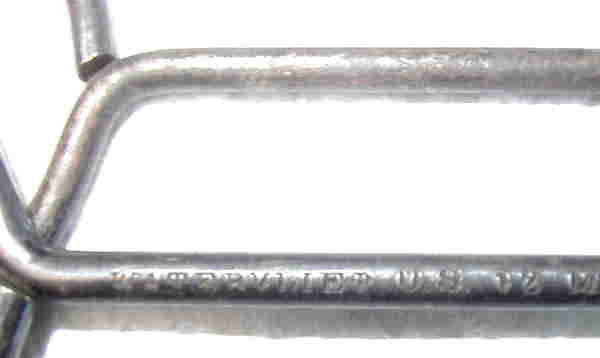
|
|
| The measurements of the large gimlet is: Ring - 2¼", Shaft - 21-3/8" OA-23-5/8". The large priming pick is: Ring - 2¼", Shaft - 14" OA 16¼". | |
|
The smallest of the artillery implements shown is this black wood
handled gimlet. I have two other gimlets that have metal handles.
Collectors should be aware that there is little or no difference between
these small "artillery gimlets" and many commercial gimlets available
at that time and for long after the passing of muzzle loading cannon.
They frequently show up in tool collections at flea markets. Most
will easily fit the vent holes of civil war cannons.
It measures 4-3/8" in length. The handle is 2½". There are no markings. |
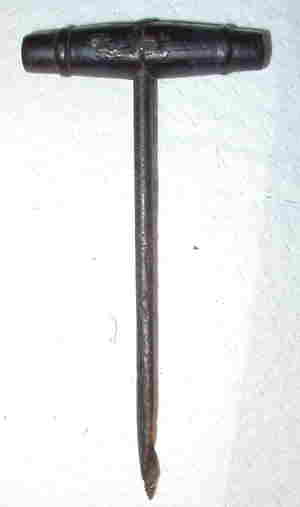 |
|
|
|
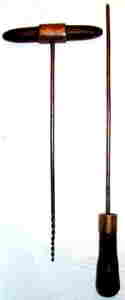 |
To the left is an unusual priming pick and gimlet set. They are both
wood and brass gripped. The wood shows a lot of wear and there are
small holes through each of the grips. It is unknown if these implements
are of Union or Confederate manufacture.
The gimlet measures 10-1/8" overall. The shaft is 9-1/8". The grip is 4¼". The pick is 12½" overall with a 9" rod and a 3½" grip. There are no markings on either of these implements. |
|
|
|
| Close-ups of the grips and rod ends follow: | |
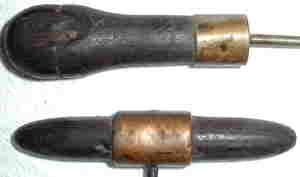
|
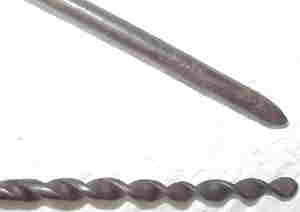
|
|
|
|
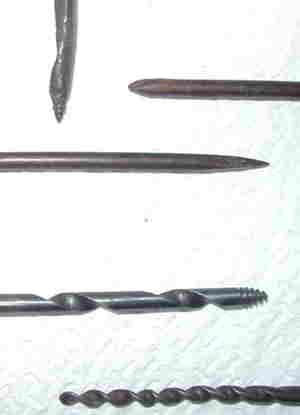
|
This is a comparative viewing of all the wire rod endings. |
|
|
|
|
The lanyard is used to spin the friction primer which sends a blast
of black powder down the vent hole to the charge in the cannon barrel
for instant ignition.
The lanyard wound and unwound follows: Note that the handle is grooved at it's center. |
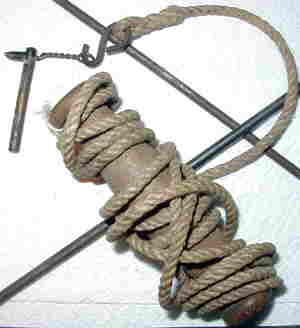
|
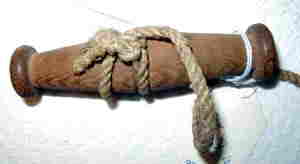
|

|
|
|
|
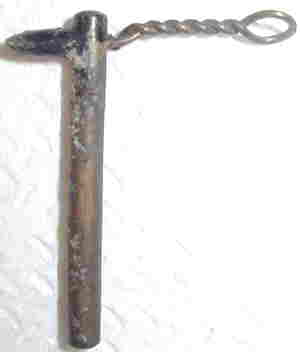
|
The lanyard handle measures 4¼" overall. It is 1" at it's widest and across the ends. The cord length is 79". The "S" hook is 7/16". The friction primer measures 1-3/16" with the wire extension being 1". |
|
|
|
|
Last, but not least is the thumbstall. This padded deerskin finger
or thumb glove is used by the gunner to stop the vent when the barrel
is being swabbed out so that no residue or hot ashes blow up the vent
and prematurely ignite the next powder load. The thumbstall is approximately 5" overall with the padded section being 1-5/8" long. The cords have been attached about ½" from the end of the glove and extend about 10". These cords would have been tied around the wrist of the user. |
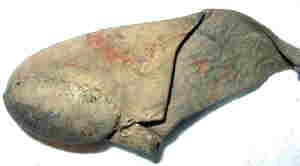
|
|
Dave Radcliffe |
|